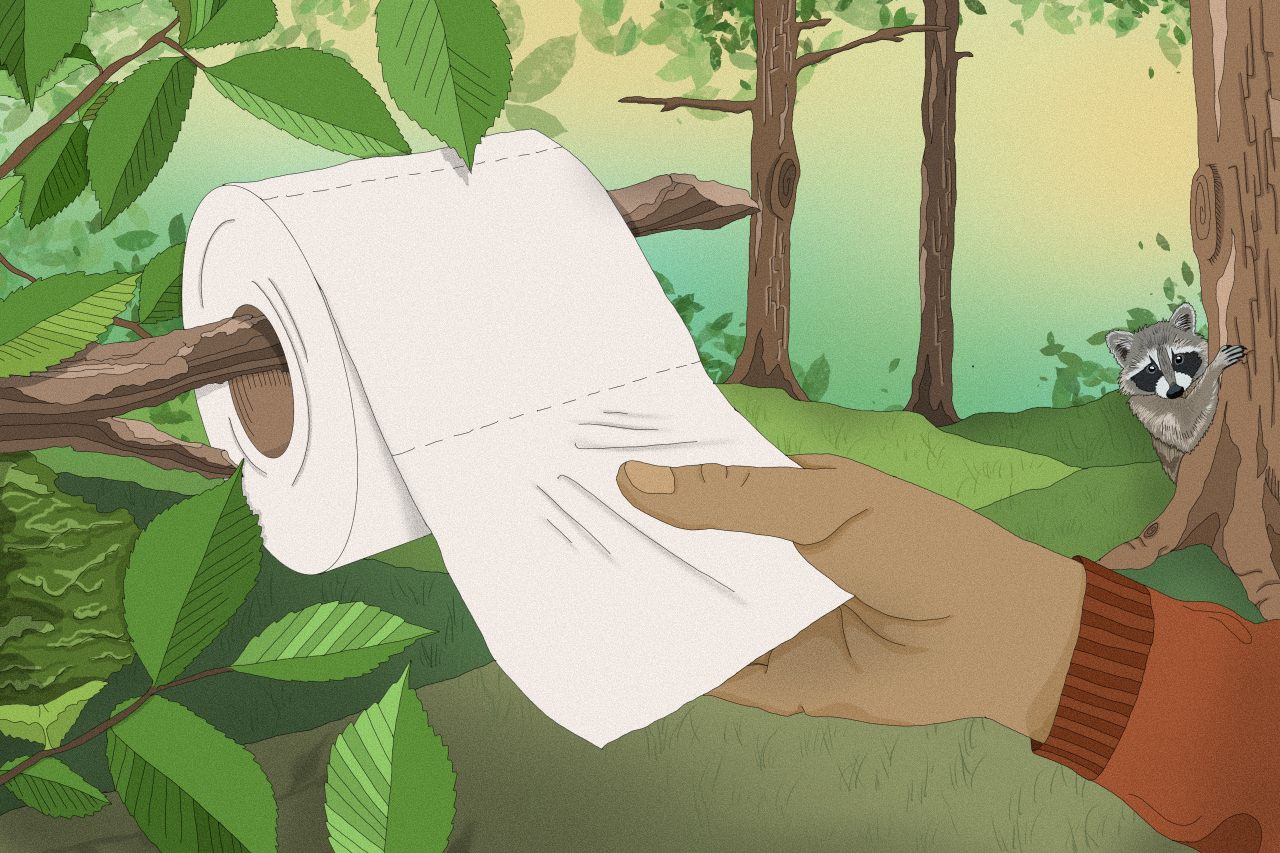How to Poop in the Woods
Be #1 at going #2 when nature calls in nature.
For many, the appeal of time outdoors lies in its slowed-down simplicity: soaking tired feet in a cold stream, cooking over a fire, sleeping under the stars. But there are moments when even the most hardcore hikers long for modern conveniences—namely, when it’s time to go number two.
It may seem intuitive that in the woods, all the world’s a toilet. After all, animals go wherever they please. But that assumption is wrong for a number of reasons, according to Faith Overall, community engagement manager at Leave No Trace, an organization that teaches people how to minimize their impact on the outdoors.
“A deer isn’t eating a bag of Doritos,” Overall says. “What we’re eating isn’t always found in the natural environment.” Our poop also contains bacteria, viruses, and diseases that can pollute water sources and harm wildlife. Properly disposing of human waste in the woods is vital to protecting what we come to enjoy in the first place.
It’s also common decency. Our outdoor spaces are more crowded than ever, and “nobody wants to come across a pile of human poop on their hike,” says Overall.
Luckily, relieving yourself responsibly isn’t that difficult. With a little preparation—and maybe a little practice—you’ll be popping a squat like a pro in no time.
Let’s start with what you’ll need to have ready for when nature calls. Carry a gardening trowel or small shovel (you can spend a couple bucks on a lightweight but sturdy trowel, made specifically for the job and available at any camping store). You’ll also need toilet paper (ideally low-ply and unscented), a heavyweight, sealable bag such as a freezer bag, and hand sanitizer.

Location, Location, Location
According to the National Park Service, the ideal site to relieve yourself will be about 200 feet—approximately 80 adult paces—from all waterways, trails, or campsites. But not just any 80 paces will suffice.
If possible, pick a place where your waste will decompose quickly. Dark and rich soils contain organisms that will help break down poop, for example, and heat from the sun will accelerate decomposition. Ideally, your temporary toilet should be on an elevated patch of ground, where rainwater is unlikely to collect.
Lastly, for the health and happiness of your fellow hikers, as well as your own privacy, try to find a site that no one else is likely to stumble upon.
Get Digging
Digging your own latrine may seem unnecessary, but burying poop keeps it away from curious animals or rain and erosion that might send it into water sources. Your “cat hole,” as it’s known in the backcountry, should be 6 to 8 inches deep and 4 inches wide, and a simple gardening trowel should do the trick in just a minute or two.
Forgot a trowel or packing light? A tent stake, trekking pole, or even boot heel can be used to excavate your cat hole. Should you find yourself mining a commode on hard and dry ground, try flipping over a large rock to get started.

Ready, Set, Go
This one is pretty self-explanatory, but there are a few tricks of the trade. Squatting with your bum below your knees should expedite things, and hanging onto or bolstering yourself against a tree can allow you a moment or two to relax. For clean-up, consider going with a natural material first—a smooth stone, for example, or leaves that are not poison ivy—and then a bit of toilet paper to finish the job.
When you’re done, grab a stick and give the contents of your cat hole a stir—this will help with decomposition. Then refill the hole with the dirt you removed and disguise it with a bit of leaf litter.
For Here or To Go?
Here’s where context matters. What to bury and what to pack out will depend on your location and the park’s regulations. In most places, according to Overall, it is perfectly acceptable to bury your toilet paper in the cat hole. In certain landscapes, however, such as an arid desert or narrow river canyons, you may need to pack out your toilet paper (and remember, wipes and menstrual products always need to be packed out). To do so, you’ll need those heavyweight, sealable bags or even some sturdy dog poop bags.
There are a few places where you will also need to pack out your poo, too. Stop by the ranger station or check out a park’s website to check. If you do need to pack out your waste, “a simple dog poop bag is not going to work,” says Overall. You’ll need a so-called WAG bag, for “waste alleviating and gelling.” The kits, available from most outdoor stores, include a NASA-developed powder that will transform poop into gel.
If all of this sounds overwhelming, Overall has some words of advice.
“Leave no trace is a spectrum. You don’t have to be perfect,” she says. “And some people are not going to be comfortable carrying out their poop. So, if burying it in the hole works, do that. Just get it deep down in there.”
(Number) One Last Thing
What about pee?
“Urine is a lot more straightforward than poop,” says Overall. That’s because urine doesn’t have much of an effect on soil or vegetation and breaks down fairly quickly.
Here, the rules are similar: Always pee at least 200 feet from water sources and pack out (or deeply bury) any toilet paper you use. There are a few caveats: since the salt in urine can draw wildlife, try not to pee anywhere animals should venture (like places with fragile vegetation). If you’re in a canyon or on a rafting trip, it may be best to pee directly in the river, to avoid the buildup of urine on the shore.
“It will depend on how fast the water is going,” says Overall. Anything over 500 cubic feet per second—think Class I rapids, or water moving steadily with some ripples—and “you can just get in and go!”













Follow us on Twitter to get the latest on the world's hidden wonders.
Like us on Facebook to get the latest on the world's hidden wonders.
Follow us on Twitter Like us on Facebook